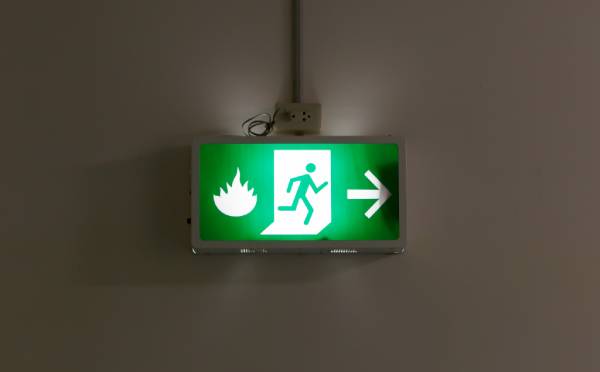
Creating Safe Evacuations in the Triangle
In an emergency, especially one involving fire or smoke, visibility can vanish in seconds. That’s where emergency lighting becomes a literal lifesaver—guiding people to safety when the main power fails. For commercial and multifamily buildings across the Triangle, having a reliable emergency lighting system is not just smart—it’s required.
At Safeguard Fire Protection, we’ve helped businesses throughout Raleigh, Durham, and Chapel Hill stay prepared with properly installed and maintained emergency lighting systems. Here’s what you need to know to keep your Triangle-area facility safe and compliant.
Why Emergency Lighting Matters in an Evacuation
When the power goes out during a fire or severe weather event, emergency lighting kicks in—illuminating hallways, stairwells, and exits to help people evacuate quickly and calmly. Without it, even familiar buildings can become dangerous mazes.
In densely populated areas like downtown Durham office buildings, Raleigh apartment complexes, or research facilities near RTP, emergency lighting plays a vital role in reducing confusion and preventing injuries during an evacuation.
What’s Included in Emergency Lighting?
A complete emergency lighting setup typically includes:
-
Exit signs with backup power or photoluminescent visibility
-
Wall-mounted emergency lights to illuminate hallways and doorways
-
Battery-powered floodlights for large rooms or common areas
-
Pathway markers to show the safest routes out
These lights are often triggered by a loss of power and supported by internal batteries or a building’s backup power system.
Common Problems We See Across the Triangle
From older downtown Raleigh buildings to newer construction in Cary or Apex, we often find these emergency lighting issues:
-
Batteries past their expiration date
-
Burned-out bulbs or damaged fixtures
-
Obstructed or missing exit signs
-
No inspection schedule or documentation
In our region, many businesses focus on more visible fire protection systems—like extinguishers or suppression units—while the emergency lights are quietly ignored. That’s a problem when seconds count.
Easy Exit Signage Maintenance Tips
Whether you manage a school in Chapel Hill or a warehouse in Durham, these tips can keep your emergency lighting in top shape:
-
Test monthly: Press the test button on each unit to confirm it works for at least 30 seconds.
-
Schedule an annual 90-minute test: Simulates a full outage to ensure battery performance.
-
Log every inspection and repair: Good records help meet local inspection requirements.
-
Replace batteries and bulbs proactively: Don’t wait for them to fail.
Safeguard Fire Protection offers scheduled inspections with digital notation and repairs across the Triangle, so you can stay focused on running your business, not your lighting logs.
Code Requirements for North Carolina Businesses
The North Carolina State Building Code, along with standards from the National Fire Protection Association (NFPA 101 – Life Safety Code), outlines strict requirements for emergency lighting in commercial buildings. Local fire inspectors in Wake, Durham, and Orange counties may require proof of testing and documentation—especially in high-occupancy spaces.
We work closely with property managers, developers, and local officials throughout the Triangle to help you stay compliant and ready.
Don’t Wait for an Emergency to Find Out Your Lights Don’t Work
Emergency lighting isn’t flashy—but it’s absolutely essential. Whether you’re operating a restaurant in downtown Raleigh, a medical office near Duke, or a retail store in Cary, make sure your exit signs and backup lights are ready when you need them most.
Safeguard Fire Protection provides emergency lighting inspections, repairs, and upgrades throughout the Triangle region. Contact us online or call 984-226-4879 to schedule service and keep your building—and your people—safe.